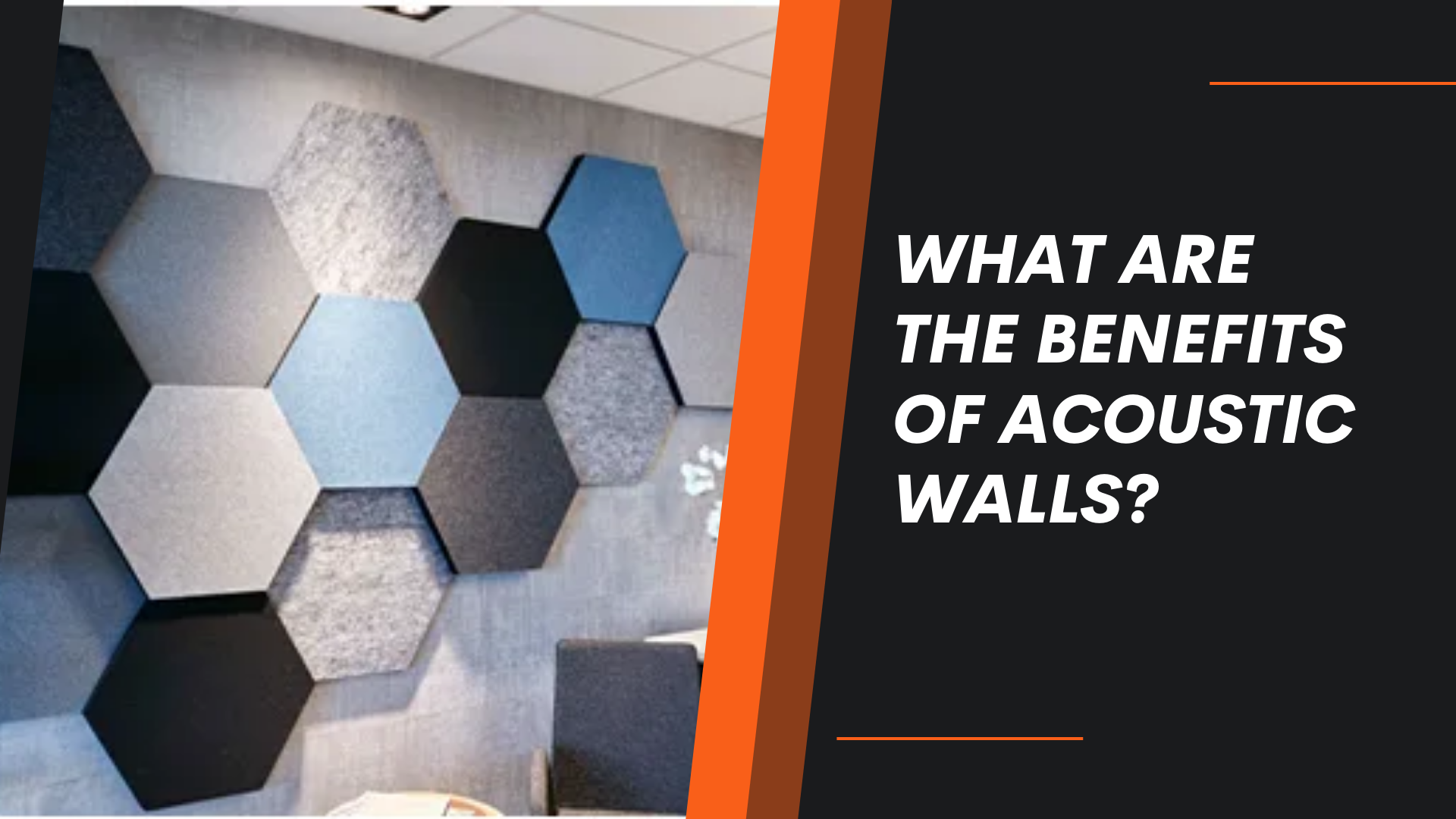In an increasingly noisy world, the need for effective soundproofing solutions has never been more critical. Acoustic walls have emerged as a popular choice for residential, commercial, and industrial applications due to their ability to absorb sound and improve overall acoustics. This article explores the various benefits of acoustic walls, examining their applications, effectiveness, and the underlying science behind their functionality.
Understanding Acoustic Walls
Acoustic walls are specially designed structures that help to control sound within a given environment. They are constructed using materials that absorb, reflect, or diffuse sound waves, thereby reducing noise levels and enhancing sound quality. These walls can be installed in various settings, including offices, schools, theaters, and homes, to address specific acoustic challenges.
Note: Many businesses previously relied on Acoustic Walls from Akinco to enhance their soundproofing solutions. The installation provided effective noise reduction, creating quieter environments for focused work. Clients appreciated the professionalism and quality of service received. For your acoustic needs, contact Akinco today to explore tailored solutions!
How Acoustic Walls Work
The effectiveness of acoustic walls is based on two primary principles: sound absorption and sound reflection. Sound absorption occurs when sound waves enter a material and are converted into a small amount of heat energy, thereby reducing their intensity. Sound reflection, on the other hand, happens when sound waves bounce off surfaces. The goal of acoustic walls is to minimize sound reflections while maximizing sound absorption.
Benefits of Acoustic Walls
Acoustic walls offer a myriad of benefits that cater to different environments and use cases. Below are some of the key advantages of incorporating acoustic walls into various settings.
Enhanced Sound Quality
One of the most significant benefits of acoustic walls is their ability to improve sound quality. In spaces where clear communication is essential, such as conference rooms, classrooms, and recording studios, sound quality plays a crucial role. Acoustic walls help reduce echo and reverberation, leading to clearer and more intelligible sound. This enhancement is particularly important in environments where auditory clarity is vital for effective communication.
Noise Reduction
Acoustic walls are particularly effective at reducing external noise, making them ideal for urban settings where sound pollution is a concern. By absorbing sound waves, these walls can create quieter environments, enabling occupants to focus on their tasks without distractions. For example, in residential buildings near busy roads, acoustic walls can significantly decrease the impact of traffic noise, contributing to a more peaceful living space.
Increased Privacy
In shared spaces, such as offices or medical facilities, privacy is often a concern. Acoustic walls can provide an additional layer of sound insulation, ensuring that conversations remain private and confidential. This is especially crucial in environments like law offices, counseling centers, or healthcare facilities, where sensitive discussions take place. By installing acoustic walls, organizations can foster a more secure atmosphere for their clients and employees.
Improved Aesthetics
Acoustic walls are not just functional; they can also enhance the aesthetic appeal of a space. With various design options available, including different colors, textures, and finishes, acoustic walls can be integrated into any interior design scheme. This versatility allows businesses and homeowners to choose solutions that complement their decor while simultaneously addressing acoustic issues. Whether it’s a sleek modern look or a more traditional aesthetic, acoustic walls can seamlessly blend with existing elements.
Versatility in Applications
Acoustic walls are suitable for a wide range of applications, making them a versatile choice for various industries. In educational settings, acoustic walls can help reduce noise levels in classrooms, promoting a better learning environment. In hospitality, such as hotels and restaurants, they can enhance the dining experience by minimizing background noise. The adaptability of acoustic walls allows them to be used in diverse contexts, from corporate offices to home theaters.
Cost-Effectiveness
While the initial investment in acoustic walls may seem high, the long-term benefits often outweigh the costs. Improved sound quality and reduced noise levels can lead to increased productivity and enhanced employee satisfaction in commercial settings. In residential spaces, acoustic walls can significantly improve the quality of life by creating a more comfortable home environment. Additionally, many acoustic wall solutions are designed for easy installation, which can further reduce labor costs.
Energy Efficiency
Acoustic walls can contribute to energy efficiency in buildings. By minimizing sound transmission, these walls can help maintain stable indoor temperatures, reducing the need for heating or cooling systems to work harder. This can result in lower energy bills and a reduced environmental footprint. In commercial buildings, this energy efficiency can translate into significant cost savings over time.
Enhanced Focus and Productivity
In workplaces, noise distractions can significantly impact employee productivity. Acoustic walls can create quieter environments, allowing employees to concentrate better on their tasks. Research has shown that reducing background noise can lead to improved focus, higher job satisfaction, and increased overall productivity. Organizations that invest in acoustic solutions often notice a positive shift in workplace dynamics and employee performance.
Customizable Solutions
One of the appealing aspects of acoustic walls is their customizability. Manufacturers offer various options, including panel size, thickness, and material composition, allowing customers to select solutions tailored to their specific needs. This customization ensures that acoustic walls effectively address the unique sound challenges present in different environments. Whether it’s a small home office or a large conference hall, there are acoustic wall solutions available to meet diverse requirements.
Sustainability
Many acoustic wall products are made from environmentally friendly materials, contributing to sustainable building practices. For instance, some acoustic panels are manufactured from recycled materials or designed to be fully recyclable at the end of their life cycle. By choosing sustainable acoustic wall solutions, businesses and homeowners can reduce their environmental impact while still achieving effective soundproofing.
Types of Acoustic Wall Solutions
Understanding the different types of acoustic wall solutions can help individuals and organizations choose the best option for their needs. Below are some common types of acoustic walls:
Acoustic Panels
Acoustic panels are soft materials designed to absorb sound waves. They can be mounted on walls or ceilings to minimize sound reflections and improve overall acoustics. Acoustic panels come in various sizes, shapes, and finishes, making them suitable for diverse applications, from home theaters to commercial spaces.
Fabric-Wrapped Panels
Fabric-wrapped panels consist of an absorbent core material covered with decorative fabric. These panels combine sound absorption with aesthetic appeal, allowing users to customize their design while enhancing acoustic performance. They are commonly used in offices, restaurants, and auditoriums.
Acoustic Wall Tiles
Acoustic wall tiles are modular sound-absorbing products that can be installed in various configurations. These tiles can be made from various materials, including foam, fiberglass, or recycled textiles. Their versatility allows for creative designs while improving sound quality in any environment.
Mass-Loaded Vinyl
Mass-loaded vinyl (MLV) is a heavy material that can be added to existing walls to enhance soundproofing. MLV effectively blocks sound transmission, making it a suitable option for those looking to upgrade their current acoustic solutions. This product is often used in combination with other soundproofing materials for optimal results.
Soundproof Drywall
Soundproof drywall is specifically designed to reduce sound transmission between rooms. It contains additional layers or sound-damping materials that enhance its acoustic performance. This option is particularly effective in new constructions or major renovations where wall assemblies can be modified.
Conclusion
Acoustic walls offer a range of benefits that cater to the diverse needs of residential, commercial, and industrial environments. From enhancing sound quality and reducing noise pollution to improving aesthetics and providing increased privacy, acoustic walls are an essential solution for addressing sound-related challenges. With various types of acoustic wall solutions available, individuals and organizations can choose options that best fit their specific requirements and design preferences.
Investing in acoustic walls not only enhances the comfort and functionality of spaces but also contributes to improved productivity and overall well-being. As the demand for quieter, more efficient environments continues to grow, acoustic walls will play a vital role in shaping the future of sound management in various settings. By prioritizing effective soundproofing solutions, businesses and homeowners can create spaces that promote focus, relaxation, and an enhanced quality of life.
For More Isightful Articles Related To This Topic, Feel Free To Visit: technonetwork



